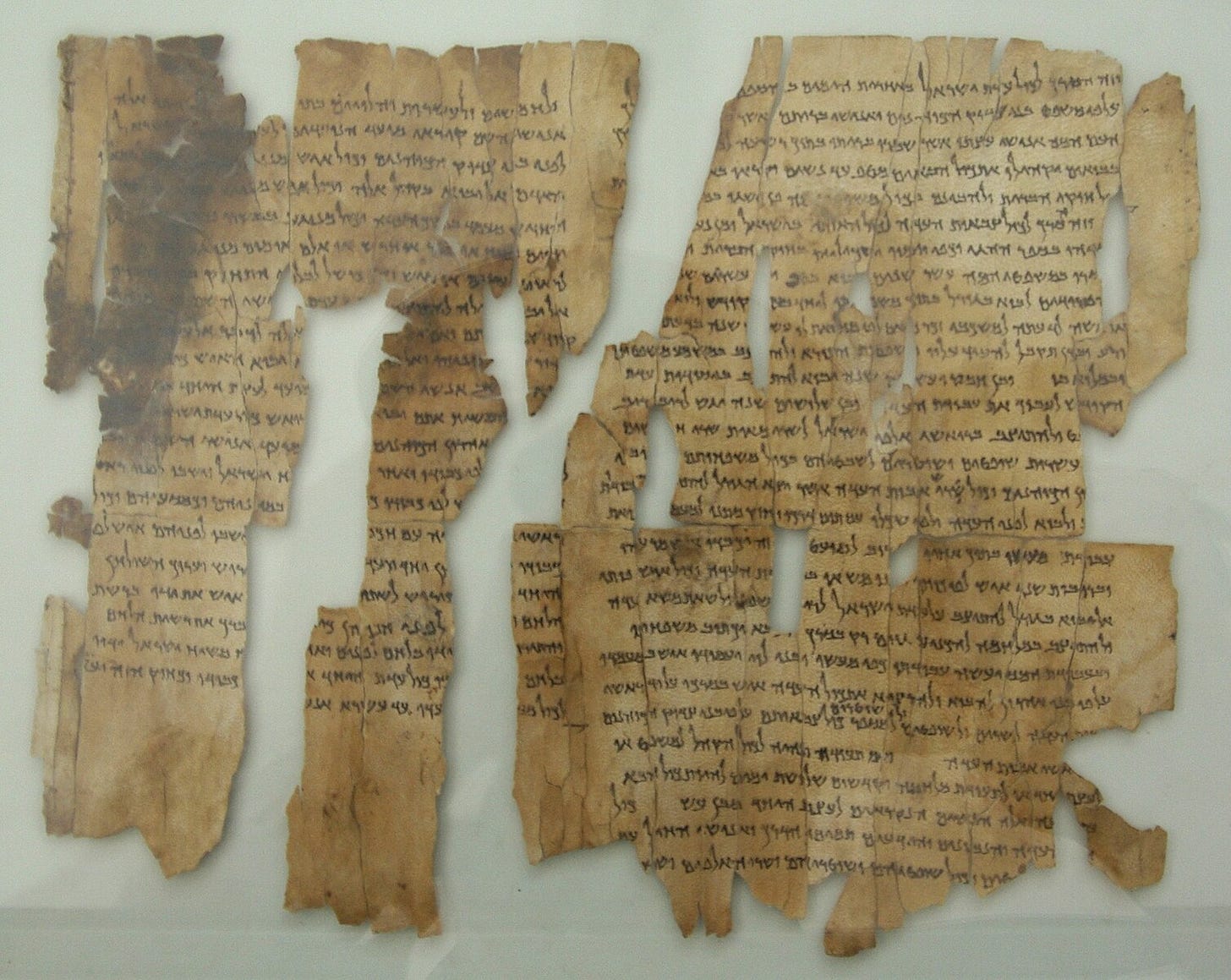Saturday Links
Redating the Dead Sea Scrolls, Los Angeles before freeways, the decline of the piano, revisiting, Nigel Slater’s “Toast,” Arthur Christopher Benson’s diaries, and more.

Good morning! The Dead Sea Scrolls may be older than previously thought according to researchers from the University of Groningen: “Some . . . could date to the time of the biblical authors themselves, not centuries after . . . Early dating efforts . . . were skewed by the application of castor oil—a 1950s attempt to make the manuscripts readable that had the unintended effect of scrambling radiocarbon results.”
More:
Mladen Popović, the lead researcher and a professor at Groningen, and his team cleaned the samples before dating them again. They then trained an AI model, playfully named Enoch after the biblical figure who reputedly walked with God and learned a few tricks along the way, to analyze ink patterns across the scrolls. When tested, Enoch produced dates that matched corrected carbon readings 85 percent of the time, often with greater precision.
The findings are not minor. A fragment from the Book of Daniel, long thought to be a later copy, now appears to be contemporary with the supposed author himself. Meanwhile, writing styles previously believed to belong to distinct eras—Hasmonean and Herodian scripts—were, it turns out, being used simultaneously for far longer than expected.
A new tool to quickly identify books that are poisonous to humans has been developed by the University of St Andrews. Historically, publishers used arsenic mixed with copper to achieve a vivid emerald green colour for book covers. While the risk to the public is “low”, handling arsenic-containing books regularly can lead to health issues including irritation of the eyes, nose and throat along with more serious side-effects. The toxic pigment in the book bindings can flake off, meaning small pieces can easily be inhaled.
In recent years, many libraries have prevented access to all suspect green books as a precaution, as testing has until now been costly and time-consuming. For example, the University of Bielefeld, along with several other German universities, isolated 60,000 books as a precautionary measure last year.
Los Angeles before freeways: Arnold Hylen’s “book of mid-20th century photos and an essay about old Los Angeles . . . was recently reissued by Angel City Press . . . Not merely a facsimile, the new edition has been augmented with additional text, notes, fresh layouts and more Hylen photos of an old city on the verge of being swallowed up by the new.”
Keep reading with a 7-day free trial
Subscribe to Prufrock to keep reading this post and get 7 days of free access to the full post archives.



